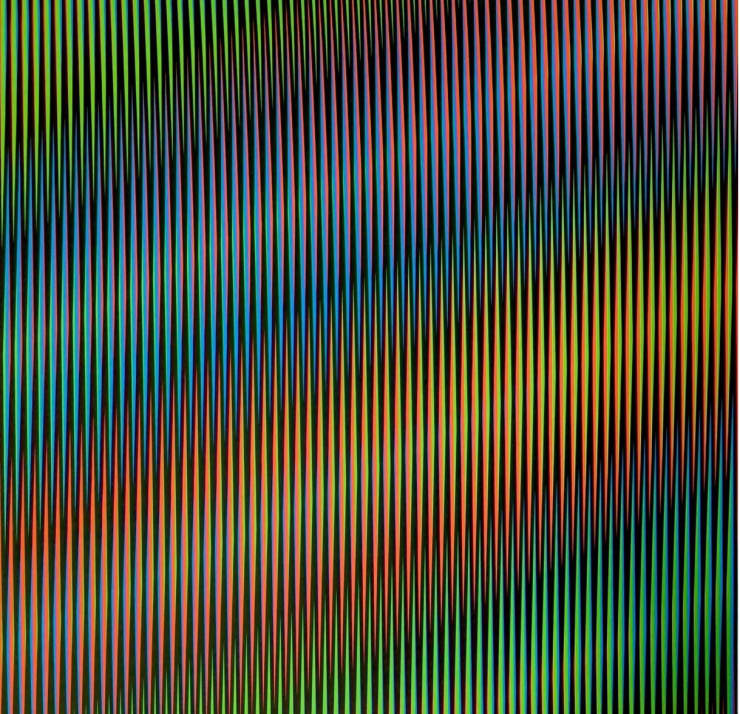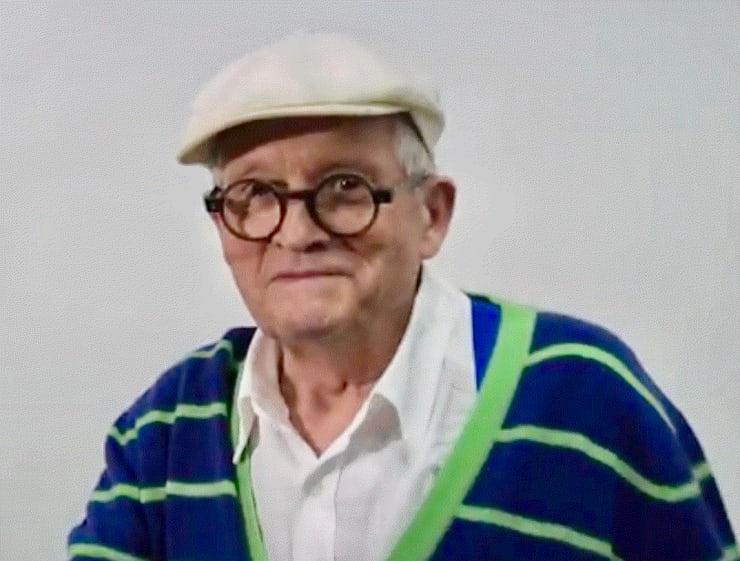Carlos Cruz-Diez
-
 Carlos Cruz-DiezAddition Chromatique RGB Serie Semana - Lunes, 2013, 2013Lithograph23 4/8 x 23 4/8 ins 60 x 60 cm
Carlos Cruz-DiezAddition Chromatique RGB Serie Semana - Lunes, 2013, 2013Lithograph23 4/8 x 23 4/8 ins 60 x 60 cm -
 Carlos Cruz-DiezInduction Chromatique a Double Fréquence RGB Serie Semana - Viernes, 2013, 2013Lithograph23 4/8 x 23 4/8 ins 60 x 60 cm
Carlos Cruz-DiezInduction Chromatique a Double Fréquence RGB Serie Semana - Viernes, 2013, 2013Lithograph23 4/8 x 23 4/8 ins 60 x 60 cm -
 Carlos Cruz-DiezInduction Chromatique a Double Fréquence RGB Serie Semana - Viernes, 2013, 2013Lithograph23 4/8 x 23 4/8 ins 60 x 60 cm
Carlos Cruz-DiezInduction Chromatique a Double Fréquence RGB Serie Semana - Viernes, 2013, 2013Lithograph23 4/8 x 23 4/8 ins 60 x 60 cm -
 Carlos Cruz-DiezUntitledChrominterference Manipulable17 5/8 x 11 6/8 x 3 7/8 ins 45 x 30 x 10 cm
Carlos Cruz-DiezUntitledChrominterference Manipulable17 5/8 x 11 6/8 x 3 7/8 ins 45 x 30 x 10 cm
Carlos Cruz-Diez
Carlos Cruz-Diez was one of Latin America’s most prominent post-war artists. Cruz-Diez spent his life researching the properties of color. He was addressed as Maestro in his native country, Venezuela, home of the Carlos Cruz-Diez Museum in Caracas.
Early Life and Education
Cruz-Diez was born in Caracas, Venezuela on Aug. 17, 1923. His father was a chemist and amateur poet. Cruz-Diez showed an interest in art, color and light at a young age, initially, he said, when he visited the plant where his father worked and where he became transfixed by the sunlight streaming through the glass cola bottles in the factory, that projected red beams of light onto his white shirt. His parents encouraged him to pursue a career in art.
In 1940, at the age of seventeen, Cruz-Diez attended the School of Fine Arts in Caracas. It was there that he met Alejandro Otero and Jesus Rafael Soto. The three friends became the best-known Venezuelan artists of the twentieth century.
Career and Personal Life
Cruz-Diez supported himself during his school years by working as a graphic designer for Creole Petroleum. After graduating from the School of Fine Arts in 1945, he took a job as a creative director at the McCann-Ericsson advertising agency, while continuing to work on his own paintings.
He married Mirtha Delgado Lorenzo in 1951. They had three children. His early work consisted of figurative paintings, of the shantytowns and poverty brought about by the repressive regime of then dictator Marcos Pérez Jiménez. In 1955, Cruz-Diez visited his friend, Jesus Rafael Soto, who was living in Paris and whose work was included in a kinetic art show in a Paris gallery.
Seeing that show changed the direction of Cruz-Diez’s work. Before returning briefly to Caracas, he took a job teaching at an art school near Barcelona, during which time he studied French. His plan was to return to Paris to be part of the kinetic and Op-Art scene that was being explored there.
During his time in Spain, he exhibited sculptures that were part of a series called Objetos Ritmicos Moviles.
Cruz-Diez finally settled permanently in Paris. Throughout his career he experimented with colors…their interactions with each other and their effects on people, places and objects. “Color,” he said, “evolves continuously in time and space.”
As his work, and experiments, progressed, Cruz-Diez gained international acclaim. His work was part of the historic 1965 The Responsive Eye exhibition at MoMA in New York.
During his lifetime he created many interactive exhibits and was commissioned to do many public works at venues throughout the world, including the walkways at the Marlins Stadium in Miami.
Carlos Cruz-Diez died in Paris on July 27, 2019.
The Legacy of Carlos Cruz-Diez
Carlos Cruz-Diez published Reflexión sobre el color in 1989. It was reissued in 2009. His memoir Vivir en Arte, recuerdos de lo que me acuerdo was published in 2019.
He has been the recipient of many awards, from many countries, including the Gold Medal from the Norwegian International Print Triennale in 1992, the Golden Medal from the Americas Society/Council of the Americas in New York in 2011, the Rank of Officer of the National Order of the Legion of Honor in Paris in 2012, the Doctor Honoris Causa from the Universidad Central in Caracas in 2014, and the Turner Medal from City University in London.
His works are included in the permanent collections of MoMA, New York. the Tate Modern in London, Musée d’Art Moderne de la Ville de Paris, Centre Pompidou, the Museum of Fine Arts, Houston and the Wallraf-Richartz Museum in Cologne.
References:
Oliver Basciano. Carlos Cruz-Diez Obituary. The Guardian. August 4, 2019.Karen Rosenberg. Carlos Cruz-Diez, Whose Art Made Color Move, Is Dead at 95.he New York Times. August 2, 2019.
Estrellita B. Brodsky. Carlos Cruz-Diez.BOMB. January 1, 2010
-

Carlos Cruz-Diez: Art Before the Digital Age
Pablo Picasso: Paintings and Prints on Exhibit in London March 5, 2025Before the generative artists working today, there were creators, like Op artist Carlos Cruz-Diez (1923-2019), who combined the science, technology and materials of their day,...Read more -

David Hockney Paints Harry Styles; Felipe Pantone; Celebrating Carlos Cruz-Diez
August 8, 2023The National Portrait Gallery in London exhibited the works of David Hockney back in February 2020. The show was on view for just twenty days...Read more







